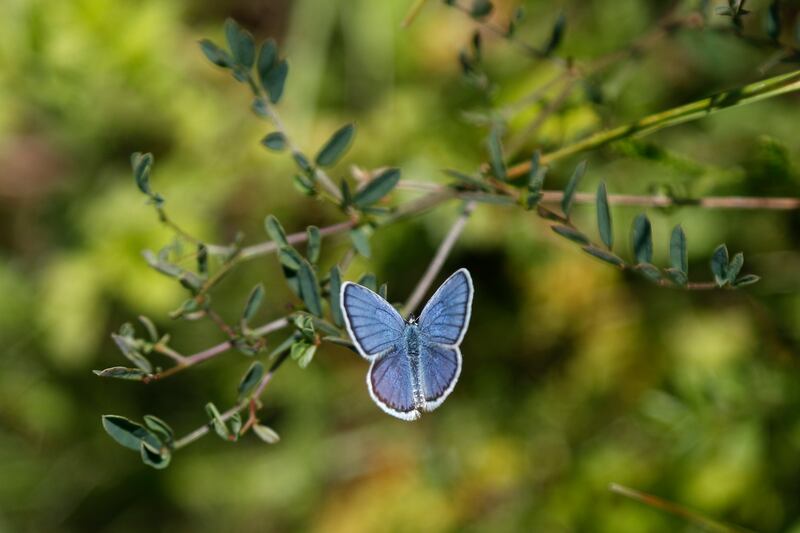A previously extinct blue butterfly has been reintroduced into the world after it had been gone for more than 150 years, CNN reports.
- About 750 large blue butterflies have emerged in Rodborough Common in Gloucestershire, southwest England, after conservationists released 1,1000 larvae in the area in 2019.
- The endangered species became extinct in Britain in 1979. It had not been seen in that specific area of England for 150 years, according to CNN.
The scientists controlled the area’s population of “myrmica sabuleti,” which are a red ant group that can limit the spread of the blue butterfly’s population, according to CNN.
“The butterfly needs high densities of the heat-loving red ant, myrmica sabuleti which has a crucial role to play in the lifecycle of the butterfly. The grazing cows create the ideal conditions for them by keeping the grass down so sunlight can reach the soil which gently warms it creating perfect conditions for the ants, which are cold-blooded and therefore need warmth in order to actively scout for food throughout the spring, summer and autumn.
“Then, in the summer when the ants are out foraging, nature performs a very neat trick — the ants are deceived into thinking that the parasitic larva of the large blue is one of their own and carry it to their nest. It’s at this point that the caterpillar turns from herbivore to carnivore, feeding on ant grubs throughout the autumn and spring until it is ready to pupate and emerge the following summer.” — David Simcox, research ecologist and co-author of the commons management plan
Richard Evans, the area ranger for the commons, said in a statement that butterflies are sensitives creatures that can be directly impacted from climate change.
“Large blues were once a common sight on the commons but some of the grassy slopes had become overgrown which had a severe impact on the red ant’s habitat. The long grass and scrub had caused the soil to cool which made it difficult for the ants to survive. As the ant population dwindled in the late nineteenth century, so did the numbers of large blues.
“Creating the right conditions for this globally endangered butterfly to not only survive but to hopefully thrive has been the culmination of many years work. None of this would’ve been possible without the combined efforts of conservationists and the local graziers.”


